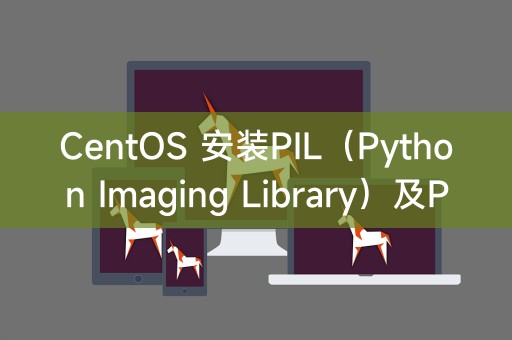
php Editor Banana brings you a tutorial on installing PIL (Python Imaging Library) and PIP (Python Package Installer) on CentOS systems. PIL is a powerful image processing library, and PIP is a Python package management tool that can easily install and manage Python third-party libraries. In this tutorial, we will introduce in detail how to install and configure PIL and PIP on CentOS systems, so that you can better utilize Python for image processing and package management. Whether you are a beginner or an experienced developer, you can easily get started and master relevant skills quickly through this tutorial.

Installing PIL (Python Imaging Library) and PIP (Python Package Installer) on CentOS is an important step in using Python for image processing and installing third-party Python packages. Below I We will introduce you in detail how to install PIL and PIP on CentOS.
1. Make sure your system has Python and pip installed, run the following command in the terminal to check:
```css
python --version
pip --version
```
If Python and pip are not installed, please install them first.
2. Install PIL, run the following command to install PIL:
pip install pillow
Pillow is a fork of PIL, which provides more features and better maintenance.
1. If PIP is not installed on your system, you can install it through the following command:
python -m ensurepip --upgrade
This will ensure you have the latest version of PIP installed on your system.
2. Use PIP to install other Python packages. To install the requests package, run the following command:
pip install requests
This will download and install the requests package and its dependencies , you can install other Python packages using similar methods.
1. When using PIP to install a Python package, please ensure that your network connection is normal in order to download the package and its dependencies from PyPI (Python Package Index).
2. If you encounter permission issues during installation, please use the sudo command to run the pip command as an administrator, `sudo pip install requests`.
3. If multiple Python versions are installed on your system at the same time, please use the pip command of the corresponding version to install, such as `pip3 install requests`.
4. If you need to update the installed Python package, please use the `pip install --upgrade package_name` command to upgrade.
5. When using third-party Python packages, make sure they are compatible with your Python version to avoid compatibility issues.
Through the above steps, you can successfully install PIL and PIP on CentOS. These tools will help you use Python for image processing and install third-party Python packages on CentOS. I hope this information will be helpful to you! If you have any questions, please feel free to ask.
The above is the detailed content of CentOS installs PIL (Python Imaging Library) and PIP (Python Package Installer). For more information, please follow other related articles on the PHP Chinese website!




